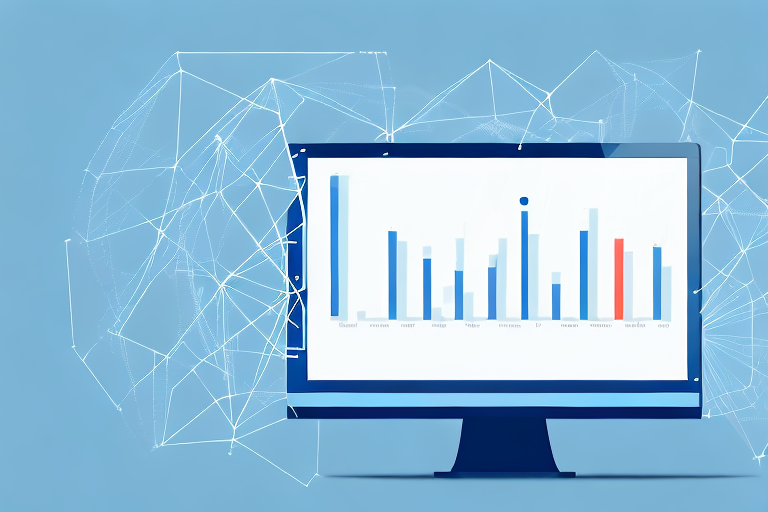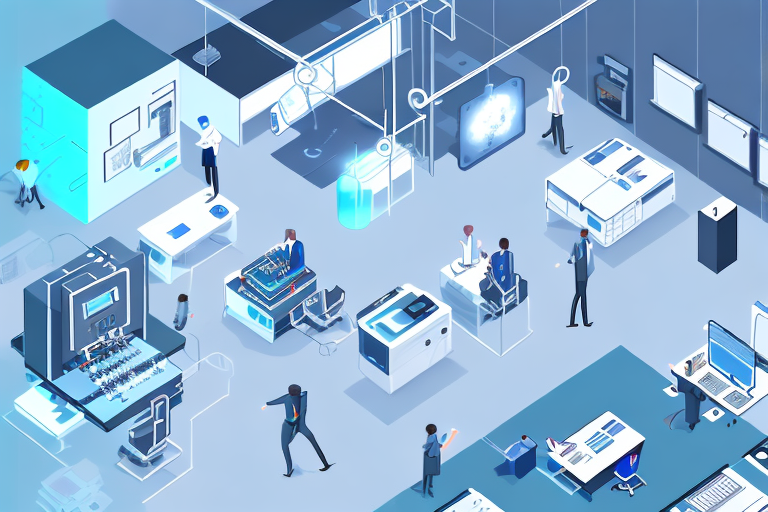In today’s digital world, businesses are constantly seeking innovative ways to enhance their operations and improve efficiency. One area that holds tremendous potential is computer vision, a field that combines artificial intelligence (AI) and image processing to enable machines to interpret and understand visual data. By harnessing the power of computer vision, businesses can streamline processes, increase accuracy, and gain valuable insights. In this comprehensive guide, we will explore the fundamentals of computer vision, its intersection with business, and how to successfully implement it in your organization.
Understanding Computer Vision
Computer vision is a fascinating field that involves the extraction, analysis, and understanding of information from visual data. It combines sophisticated algorithms with the power of artificial intelligence to enable machines to interpret images or videos in a manner similar to how humans perceive the world. By leveraging computer vision, we can unlock a wide range of applications and possibilities.
The Basics of Computer Vision
At its core, computer vision encompasses several fundamental tasks. One of these tasks is object recognition, which allows machines to identify and classify specific objects or features within an image or video. Through the use of deep learning techniques, computer vision algorithms can not only recognize distinct objects but also understand complex patterns and variations.
Another important task in computer vision is image segmentation. This involves dividing an image into meaningful regions or segments, allowing for a more detailed analysis of its contents. Image segmentation is crucial in various applications, such as medical imaging, where it can help identify and isolate specific structures or abnormalities.
Additionally, computer vision involves image restoration, which aims to enhance the quality and clarity of images that may be degraded due to noise, blur, or other factors. By applying advanced algorithms, computer vision systems can restore images to their original or even improved state, enabling better analysis and interpretation.
Motion analysis is yet another key aspect of computer vision. It involves tracking and understanding the movement of objects or people within a video sequence. By analyzing motion patterns, computer vision algorithms can extract valuable information, such as object trajectories, speed, and behavior, which can be useful in various domains, including surveillance, sports analysis, and autonomous vehicles.
The Role of AI in Computer Vision
Artificial intelligence (AI) plays a critical role in driving advancements in computer vision. AI techniques, such as neural networks, enable machines to learn from large datasets and make intelligent decisions based on their learned knowledge. This ability to learn and adapt empowers computer vision systems to continuously improve their performance over time.
AI-driven computer vision algorithms have the remarkable ability to analyze and understand visual data with speed and accuracy. They can detect anomalies, identify patterns, and extract valuable insights that were once only possible through human observation. This opens up a world of possibilities for businesses looking to optimize their processes and make data-driven decisions.
Moreover, AI-powered computer vision systems can be trained to recognize and understand specific objects or features in images or videos. This has numerous practical applications, such as in autonomous vehicles, where computer vision algorithms can identify pedestrians, traffic signs, and other vehicles, enabling safer and more efficient transportation.
Furthermore, computer vision combined with AI has the potential to revolutionize industries such as healthcare, where it can assist in the diagnosis of diseases by analyzing medical images, or in retail, where it can enable personalized shopping experiences by recognizing customer preferences and suggesting relevant products.
In conclusion, computer vision, with its ability to extract information from visual data, has become an essential technology in various domains. By leveraging AI techniques, computer vision systems can continuously improve their performance, enabling machines to understand and interpret the world around us with increasing accuracy and sophistication.
The Intersection of Computer Vision and Business
The Impact of Computer Vision on Business Efficiency
Computer vision technology has the potential to revolutionize business operations by automating repetitive tasks, reducing errors, and optimizing resource allocation. For example, in manufacturing, computer vision can be used to inspect products for defects, ensuring quality control at high speeds and volumes.
By automating inspection processes, businesses can significantly reduce the time and manpower required while improving accuracy. This not only enhances efficiency but also minimizes the risk of human error, resulting in higher customer satisfaction and reduced costs for rework or returns.
Moreover, computer vision can also be applied to inventory management, enabling businesses to track and monitor their stock levels in real-time. With computer vision algorithms, retailers can accurately count and categorize products, ensuring that they have the right amount of inventory available to meet customer demand. This not only prevents stockouts but also avoids overstocking, leading to improved sales and reduced holding costs.
Potential Business Applications of Computer Vision
Computer vision finds applications across various industries, offering unique advantages and opportunities for process improvement. In retail, computer vision can be used to analyze customer behavior, track inventory, and enhance the shopping experience through personalized recommendations and targeted advertisements.
Imagine a scenario where a customer walks into a retail store. With computer vision technology, the store can analyze the customer’s facial expressions and body language to gauge their interest and engagement with different products. This valuable data can then be used to optimize store layouts, product placements, and marketing strategies, ultimately leading to increased sales and customer satisfaction.
In healthcare, computer vision can aid in the diagnosis of diseases, analyze medical images, and assist in surgical procedures. By leveraging computer vision technology, healthcare providers can improve patient outcomes, enhance efficiency, and reduce healthcare costs.
For instance, computer vision algorithms can be used to analyze medical images such as X-rays, CT scans, and MRIs. By automatically detecting abnormalities and highlighting potential areas of concern, computer vision can assist radiologists in making more accurate diagnoses. This not only saves time but also improves the accuracy of diagnoses, leading to better treatment plans and improved patient care.
In addition, computer vision can also be utilized during surgical procedures. By integrating computer vision systems with surgical instruments, surgeons can have real-time visual feedback, allowing for more precise and controlled movements. This can lead to safer surgeries, reduced complications, and faster recovery times for patients.
Implementing Computer Vision in Your Business
Computer vision technology has revolutionized various industries by enabling machines to understand and interpret visual data. By integrating computer vision into your business, you can automate processes, enhance decision-making, and improve overall efficiency. However, implementing computer vision requires careful planning and execution. Here are the key steps to follow:
- Identify your business needs and objectives: Determine which processes can benefit from computer vision technology and set clear goals for implementation. For example, you might want to automate quality control in manufacturing or enhance customer experience through facial recognition.
- Collect and preprocess data: Gathering relevant data is crucial for training the computer vision model. Ensure the quality of the data by cleaning and annotating it. This step involves removing noise, correcting errors, and labeling the data to provide meaningful information for the model.
- Train the computer vision model: Utilize machine learning techniques to train the model using labeled data. This process involves feeding the model with a large dataset and allowing it to learn patterns and features. The model learns to recognize objects, classify images, or perform other tasks based on the provided data.
- Test and refine the model: Evaluating the performance of the trained model is essential to ensure its accuracy and effectiveness. Testing involves feeding the model with new data and assessing its predictions. If the model does not meet the desired performance, refinement techniques such as adjusting hyperparameters or increasing the training data can be applied.
- Implement and deploy the system: Integrating the computer vision system into your existing infrastructure is the final step. Ensure compatibility and scalability by considering factors such as hardware requirements, software integration, and network infrastructure. Thorough testing and validation are necessary before full-scale deployment to ensure the system functions as intended.
Overcoming Challenges in Implementation
While the benefits of computer vision in business are promising, implementation may encounter challenges. It is important to be aware of these challenges and have strategies in place to overcome them. Some common obstacles include:
- Data privacy concerns: When dealing with visual data, privacy concerns may arise. It is crucial to handle data responsibly and ensure compliance with relevant regulations. Implementing data anonymization techniques and obtaining proper consent from individuals can help address these concerns.
- Lack of domain-specific labeled data: Training a computer vision model requires a large amount of labeled data. In some cases, obtaining domain-specific labeled data can be challenging. To overcome this, you can explore options such as data augmentation techniques, transfer learning, or collaborating with external data providers.
- Technical limitations: Computer vision models may face technical limitations, such as low-light conditions, occlusions, or variations in image quality. It is important to understand the limitations of the technology and set realistic expectations. Engaging experts in the field can help identify and address these limitations effectively.
To overcome these challenges, it is crucial to engage experts in the field, invest in data management, and conduct thorough testing and validation before full-scale deployment. By addressing these challenges, you can successfully implement computer vision technology in your business and unlock its full potential.
Measuring the Success of Computer Vision in Business
Key Performance Indicators for Computer Vision
Measuring the success of computer vision implementation requires the establishment of relevant key performance indicators (KPIs). These KPIs may include accuracy rates in object recognition, reduction in processing time, cost savings, or improvements in customer satisfaction.
By regularly monitoring and analyzing these KPIs, businesses can assess the effectiveness of their computer vision solutions and identify areas for further improvement.
Long-term Benefits of Computer Vision in Business
The integration of computer vision technology can yield long-term benefits for businesses. Apart from enhancing efficiency and accuracy, it enables organizations to gain valuable insights from visual data that would otherwise remain untapped.
Furthermore, as computer vision continues to evolve, businesses can anticipate advancements in areas such as video analytics, augmented reality, and autonomous systems. Staying at the forefront of these developments can give organizations a competitive edge and open up new opportunities for growth.
Future Trends in Computer Vision for Business
Emerging Innovations in Computer Vision
As technology progresses, new innovations in computer vision are on the horizon. One such area is the integration of computer vision with other cutting-edge technologies, such as Internet of Things (IoT) and robotics. This convergence promises to revolutionize industries like transportation, logistics, and smart cities.
Additionally, advancements in deep learning algorithms and computational power are pushing the boundaries of computer vision, enabling more accurate and efficient analysis of visual data.
Predictions for Computer Vision in Business
The future of computer vision in business is bright, with numerous possibilities in store. We can expect further automation of tasks, enhanced accuracy and speed, and the integration of computer vision into everyday business operations.
Furthermore, as businesses continue to generate vast amounts of visual data, computer vision will play a vital role in unlocking its potential value. By leveraging the insights extracted from images and videos, businesses can make informed decisions, optimize processes, and drive growth.
In conclusion, computer vision offers a wide range of benefits and opportunities for businesses to improve their processes. By understanding the fundamentals, exploring its applications, and carefully implementing computer vision solutions, organizations can position themselves at the forefront of technological advancements and gain a competitive advantage. Embracing computer vision is not just about embracing technology; it is about embracing innovation and the transformation of business operations in the digital age.




